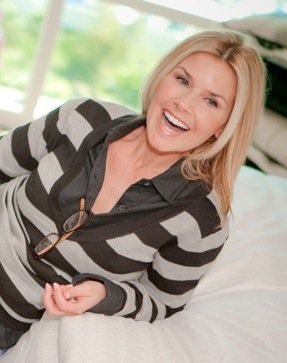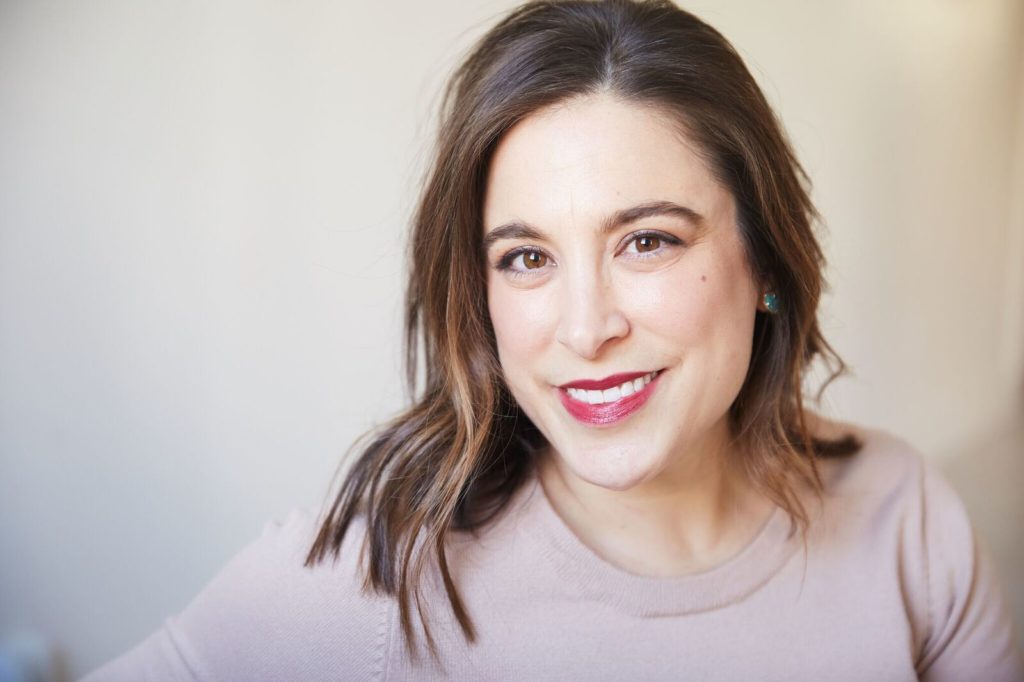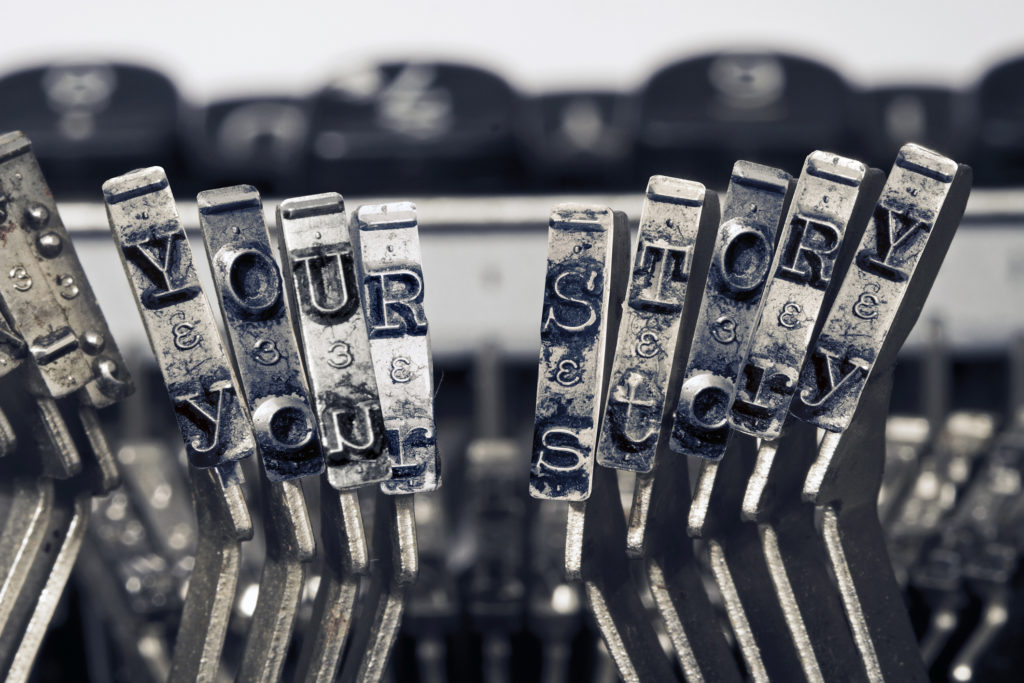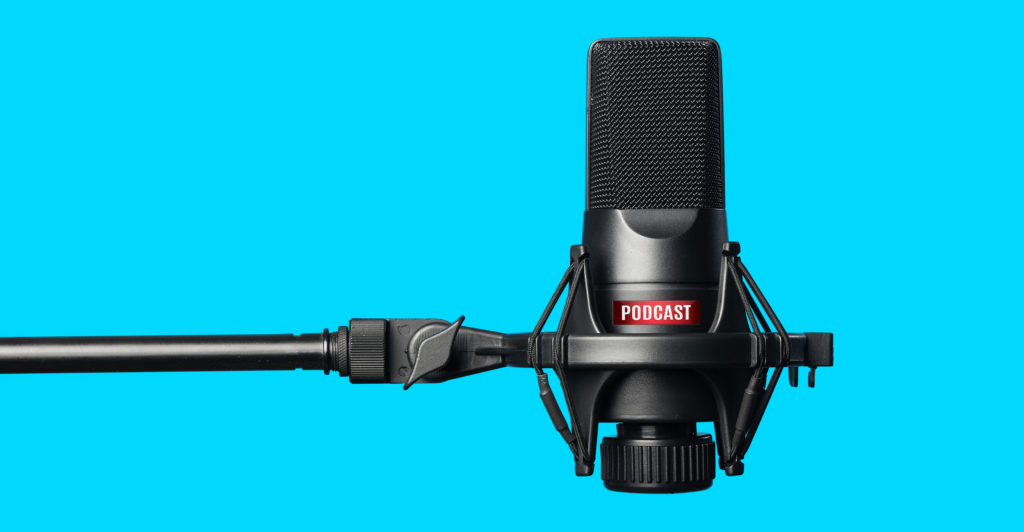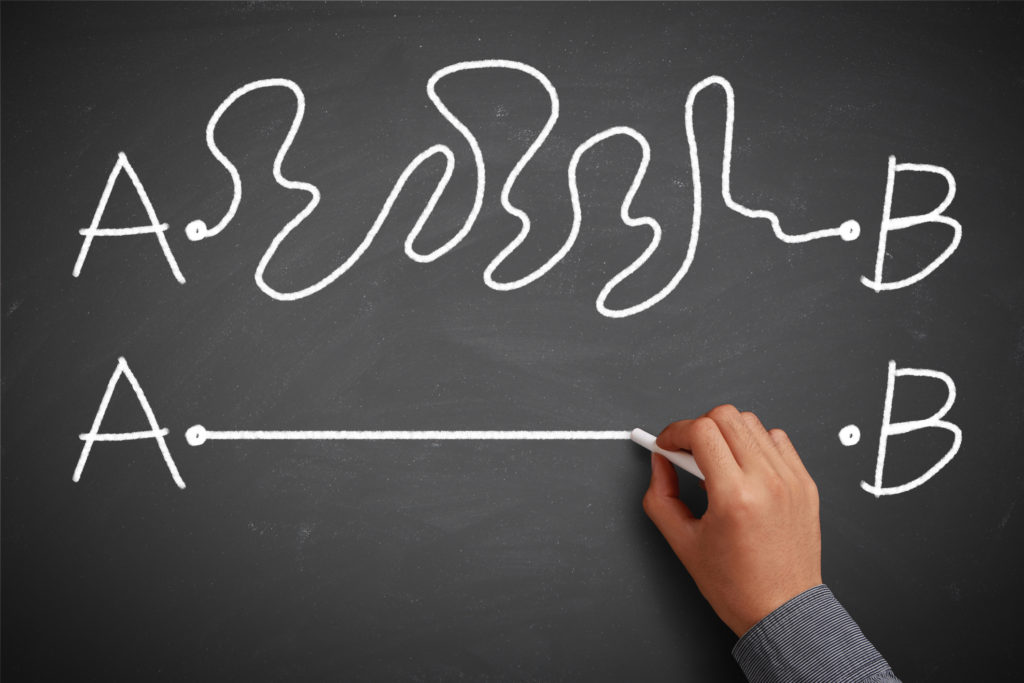Media Training Report 4: Your TV Look | Guide to Attire, Makeup, Hair (And More)
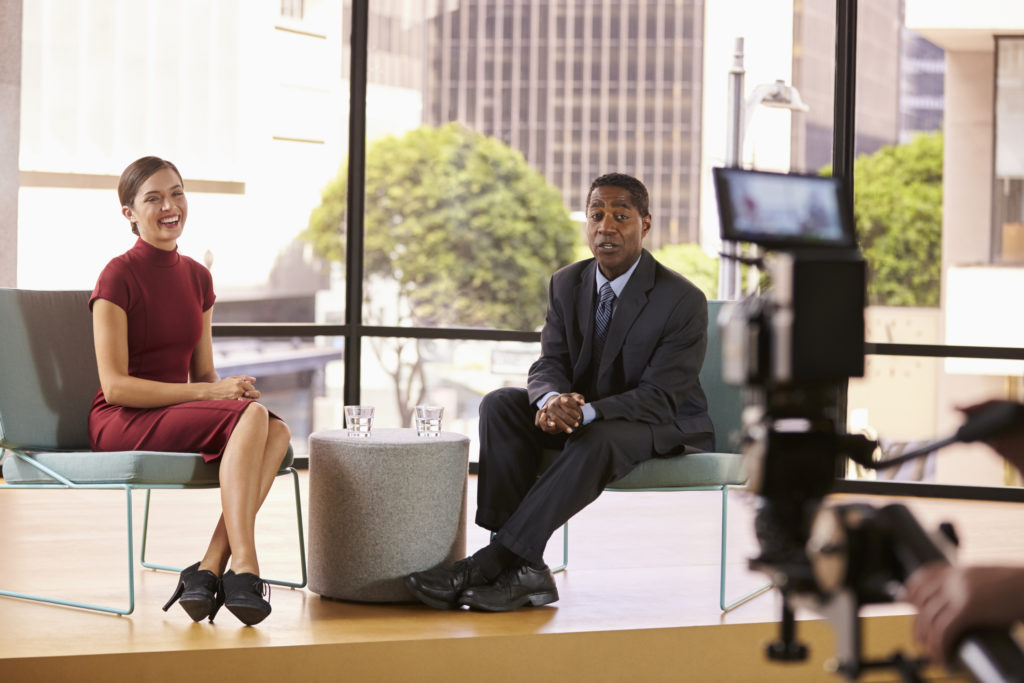
You may only have a few moments to convey all it is that you want to say during your next television interview, so the clothes you wear, the cosmetics and hairstyle you choose, and the accessories you use all play a crucial role in getting your message out to your audience.
The time it takes to plan and prepare your appearance may seem disproportionate to your limited time before the camera. However, you will thank yourself later. For those brief moments in the spotlight, all that work to look good will inevitably make you feel good. You will forever be captured at your best.
We can’t all be perfect 10s, but we can be a perfect 10 when it comes to knowing the tips and techniques to look good and feel your best during your next television interview. In this post, you will learn 10 tips that will help you to look great for your next television interview.
10 Tips on How to Look Great on TV
1. What do I wear?
It’s not just in televised news that clothes have an outsize influence in how others perceive us. What you reach for can make you look formal or casual, put-together or unkempt. You can appear more vibrant or muted. You may don an actual uniform for your job or create an informal one that fits a persona – “a creative type,” “an eccentric gentleman,” or “a hipster.”
Here’s where to start:
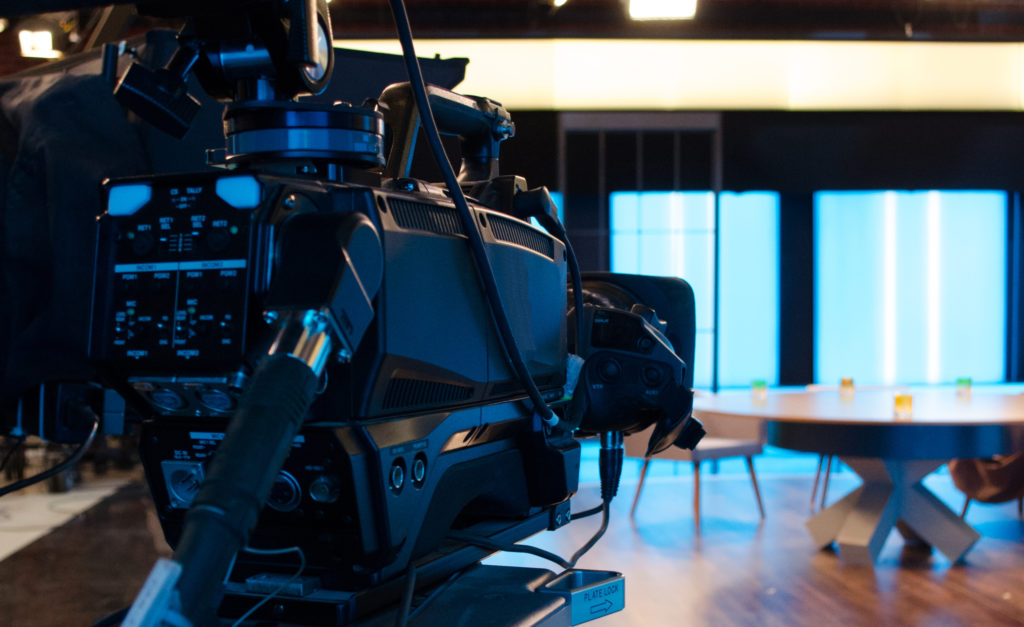
Do your homework. Watch the program to see what the hosts, anchors, and other guests are wearing. You don’t have to be an exact replica, but if you wear something that is markedly different from the norm, then the audience may concentrate more of its attention on your clothes than on your words. For instance, a well-known rock star might look odd in a three-piece banker’s suit, while a banker would look odd conducting an interview in a graphic T-shirt, skinny jeans, and a denim jacket.
Talk to the producer. Is this a formal or informal show? Should you don a three-piece suit, or can you reach for fitted chinos, a sports coat, and button-down, and leave the tie at home? Is a sheath dress the way to go, or will fitted trousers, a blouse, and cardigan be OK?
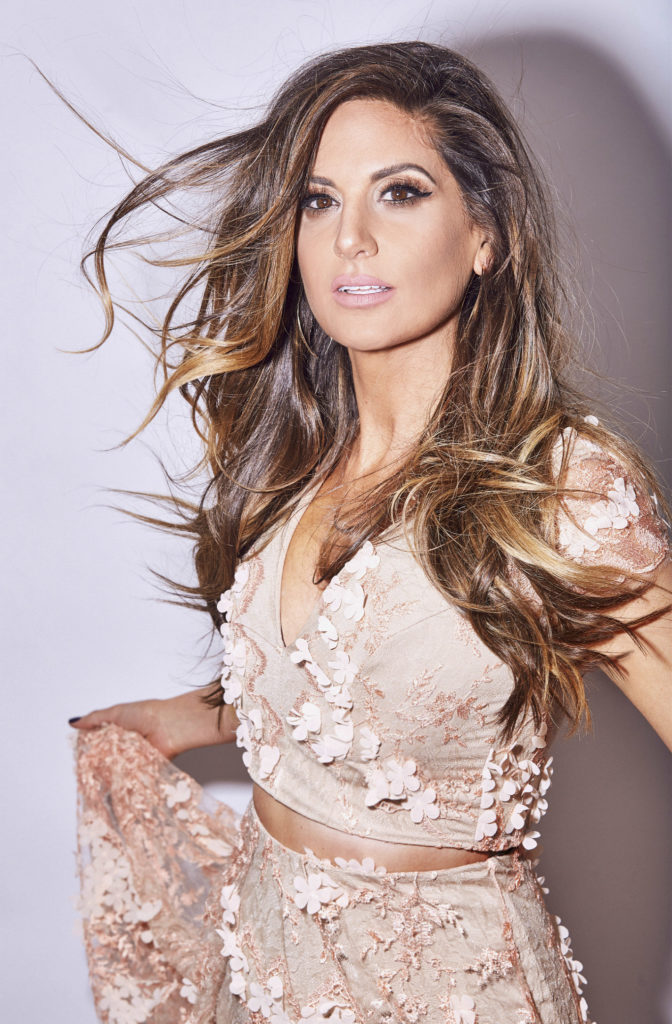
Sonia Isabelle
Sonia Isabelle, an Emmy Award, Associated Press, and Telly Award-winning lifestyle host and producer, who hosts Celebrity Page TV, a nationally syndicated entertainment show, suggests calling ahead:
“The more you can ask the producer ahead of time, the better you will be prepared. You might say, ‘What’s the format of the show? Can we do a quick run-through of the outline of the segment so I know how to prepare?’”
- Informal vs. formal. Dressing up is typically the better choice between dressing up or dressing down. However, if you can assess the fashion choices of the journalists who will be interviewing you, you can more accurately choose between a business casual and business formal look. One caveat: While sleeveless dresses are popular on television, long sleeves appear more formal than short sleeves.
- Consider the set. Ask about the studio’s color scheme and design to avoid having your clothes clash with the set.
- Orient yourself. Are you going to be standing? Sitting? Your outfit should work for any occasion, but having the knowledge of where you will be situated might affect your options, Isabelle says. “For women, certain dresses and outfits are not as flattering when you are sitting down,” she says, adding that the material may wrinkle or ride up and reveal more than intended. Men won’t want pants that become floods when they hop onto that director’s chair or stool. (Later in this post, we have some thoughts about socks, too.)
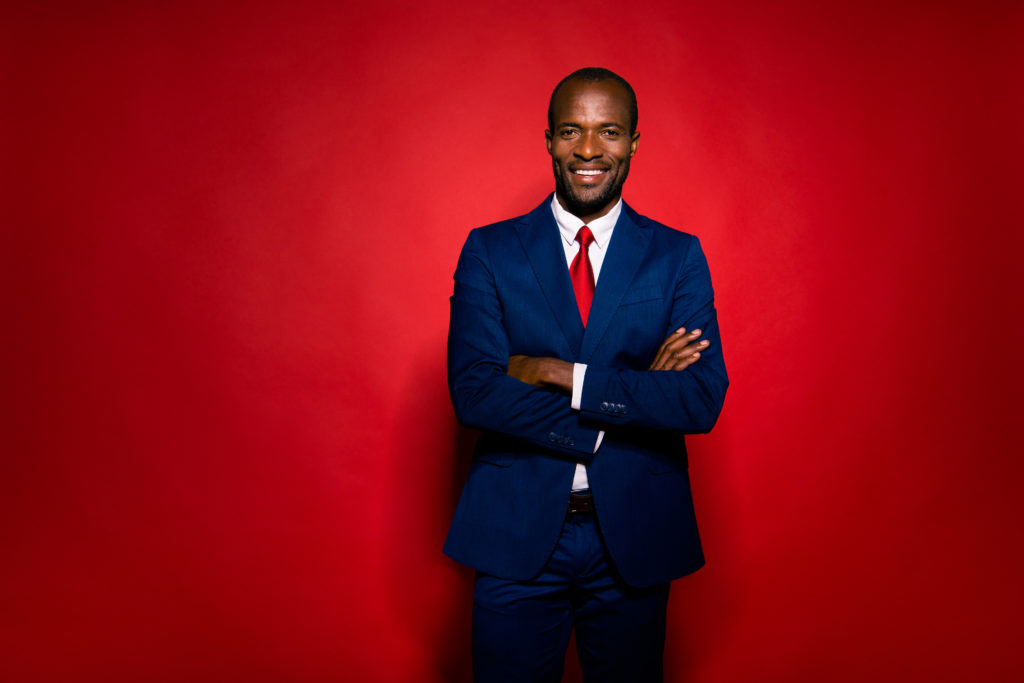
2. Look the part and be yourself
Being and feeling authentic is crucial in conveying your messages to your audience. Your look needs to align with your brand or your organization, as well as resonate with who you are.
Here are some important considerations in looking, and feeling, the part:
- Know the context. In general, as a guest on a TV program you should consider the subject matter, the audience, and the show’s style when it comes to your wardrobe, Isabelle says. If the interview is outside as opposed to inside, for instance, you may want to forgo the formal and go for a more casual look. (Think of the politicians who visit disaster sites. Inevitably, they ditch the tie and jacket – or trade it for a windbreaker – and roll up their sleeves.)
- Embody your message. Choose clothes that support your message and are industry appropriate. Say you are a manager who runs a manufacturing plant. Your door is always open, and you frequently walk through the facility to check in with your employees. You may feel you need to wear a suit to be considered more “official” if a TV crew comes to run a story about your plant. Such a choice might not only appear incongruous alongside your employees’ uniforms, but also takes away from the true you – an approachable, hands-on manager. Nicely fitted and pressed khaki pants, a belt, and polo shirt (with your company’s insignia) may be your better choice.
- Consider your age. Only you know what you can wear that looks good based on your shape, lifestyle, and comfort level. Fashions wax and wane, but that distinctive ’90s dress you wore in the ’90s is going to look retro on someone who was born in the ’90s and likely will just look old on you. You do want to be fashion forward, so remember that classic looks never go out of style, and trends are different from fads. If red is having a moment go ahead and reach for that tie or statement necklace – it still looks good years later if the rest of the package is timeless, contemporary, and elegant.
- Express yourself. A swirling, multicolored paisley print might best represent your fashion sense, but on TV, that pattern will likely become “louder” than your words. If you stick with a solid and sensible color for your clothes, say navy or gray, you can still find ways to express yourself. A bright red tie, or a scarf with a simple pattern is the way to go. Basically any color that is too loud (a neon pink tie) or pattern that is too busy (a multicolored paisley swirl) will attract attention away from your face. Also, colors close to your eye color also will draw the audience’s attention to your face, and what you are saying.
- Be wary of logos. Logos (or pins) that are relevant to your message or represent a position you or your organization advocates can be a worthy addition. Just be mindful that everything you wear can be seen and will be parsed out by the audience. Pins may also pick up a glare under studios lights, presenting a distraction. A small amount of makeup cream or powder applied to the pin may minimize the glare. However, if there is any worry about the reflection, it’s best to leave the pin at home.
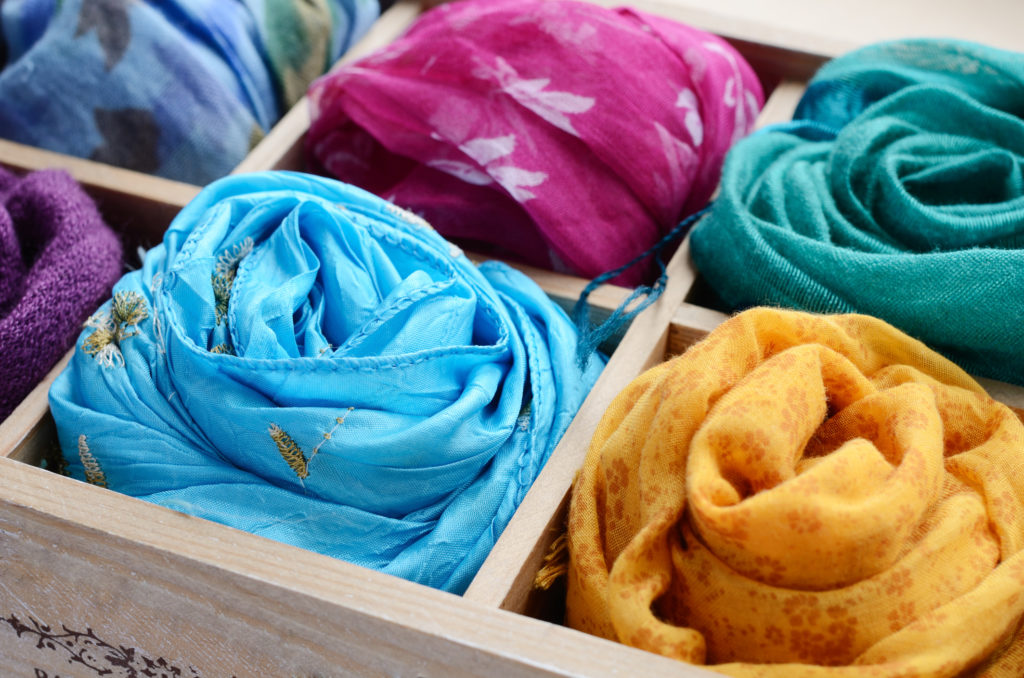
3. Cut a fine figure
The cut is the style or shape of the garment – and what you choose should flatter your body and create a clean and sharp silhouette. Be sure that your outfit looks good from all sides and can handle all manner of movement – whether you are sitting, standing, or walking.
If you are a spokesperson or subject matter expert that expects to be on television often, it may not hurt to invest in an image consultant, who can do an analysis of your body shape and suggest cuts and looks that are more flattering. If you are DIY-ing it, here are some tips:
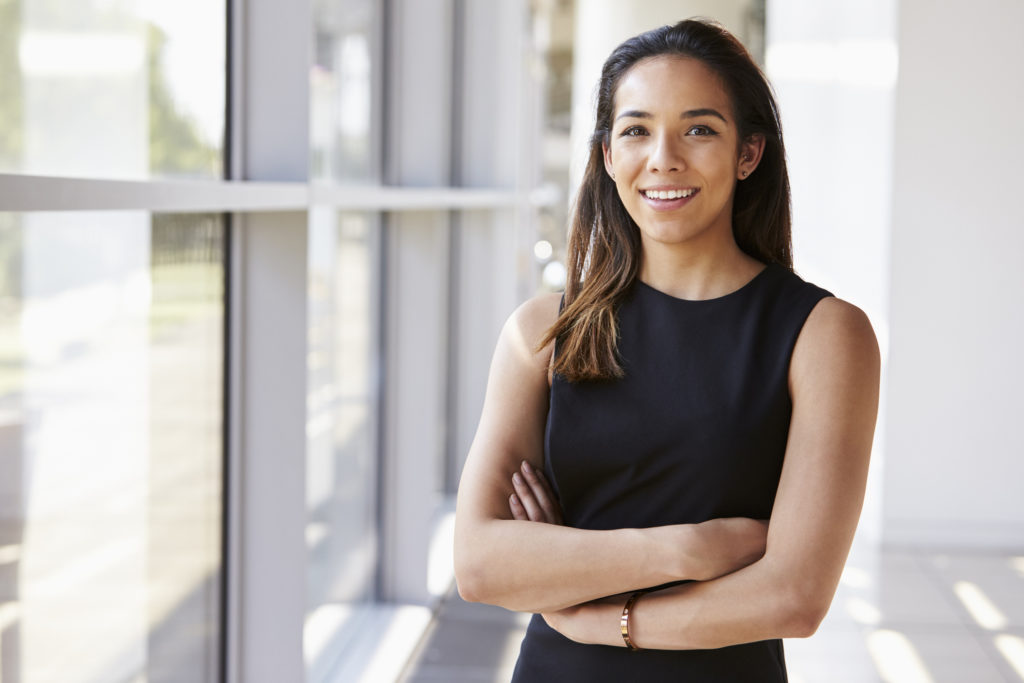
- Refrain from boxy jackets/suits or billowy dresses. Cameras can have a hard time picking up on the depth of flowy dresses and boxy jackets so you can look far bigger and shapeless than you are, Isabelle says. Wear more tailored suits, fitted sports coats and dresses, such as sheaths, pictured above, which are straight, simple cuts that are a bit more fitted around the waist and hips, or A-line styles. You also can create waists with belts.
- Avoid too-tight construction. Conversely, if you wear something that is too tight, it may make you look like you have squeezed yourself into something that is way too small. For women, such constriction may cause considerable problems if you must sit – your skirt may rise uncomfortably above your knees or form ripples of wrinkles across your lap. For men (and women), a button-down that is too tight will cause buttons to strain, which is not a good look.
- Proper tailoring. Men’s suits should hang well, and sleeves should not hang over their hands. Hems should be long enough to avoid exposing the skin on your legs while seated. Wear long, dark socks similar in color to your pants. Make sure your shirt collar, which frames the lower part of your face, fits well.
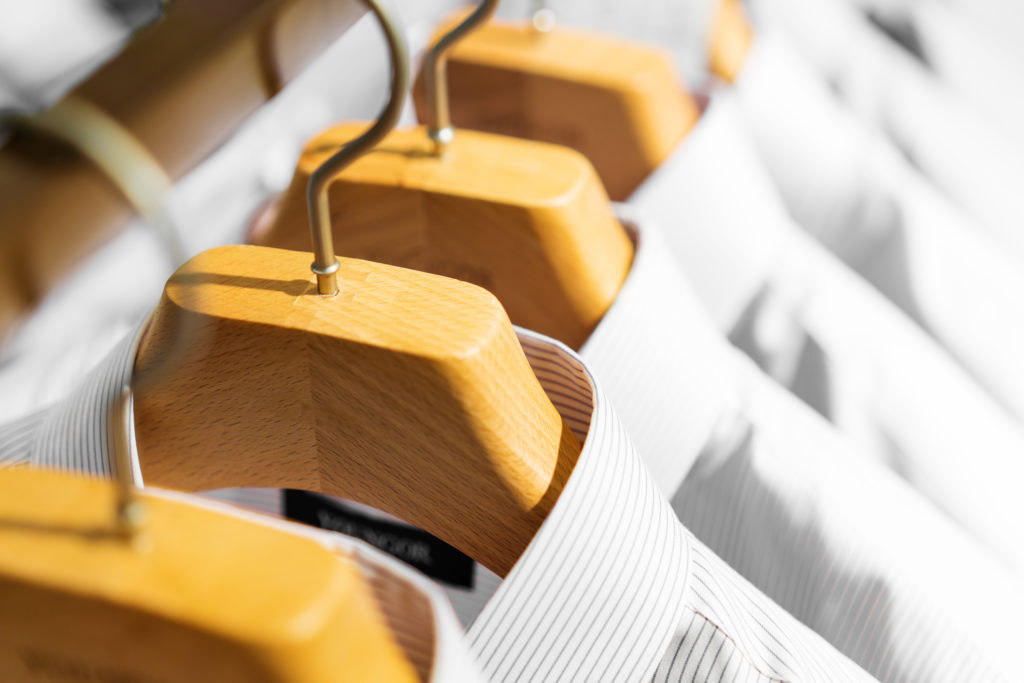
Know what to accentuate
Lynne Glassman, who runs Doctor of Dress, a Washington, D.C.-based image consultancy firm, says there are ways to reduce areas of concern. She calls it “illusion dressing,” which “highlights your strong points, while camouflaging where you need to.”
Here are a few tricks:
- Heavy around the middle. Avoid material that is bulky or shiny on the lower body. For women, Glassman says to accentuate your shoulder line with a horizontal style, such as a boat neck top, and find a style that skims over the abdomen and tapers to a hemline below the abdomen. Men and women should look for stretch material, refrain from a conspicuous belt around the middle, and employ a monochromatic look – don’t pick a jacket that is lighter than your pants and have the hem stop at your waist. That’s where the viewers’ eyes will go.
- You want to look taller. Avoid creating a horizontal line in the middle of your body, such as a top of a light color and a bottom of a dark color (or vice versa), Glassman says. Men and women can make their legs look longer, for instance, by picking hose or socks, as well as shoes, that are a similar color to their pants or hemline. Men who want to look taller should avoid baggy outfits or ill-fitted clothing, according to Antonio Centeno, who runs the online style guide Real Men, Real Style. Pants should be hemmed, sleeves shortened, and clothes taken in, Centeno says, because the wider you look the shorter you look.
Material matters
While the TV studio may be cold, the lights can be hot. Go for breathable, mid-weight materials that allow you to move and stretch, say most experts. Natural fabrics or blends work well. If you are worried about perspiring, you could opt to invest in some moisture wicking undershirts or underarm pads (also called dress shields).
Here are a couple of other considerations:
- Avoid shiny or unusual fabrics. Anything out of the ordinary may mean your clothes get more of the attention. For instance, football player Cam Phillips’ outfit merited its own line of questions at the Atlantic Coast Conference’s preseason media days.
- Keep it quiet. Avoid fabric or shoes that make noise when you move.
4. Show your true colors
If you have been buying our own clothes for some time, you generally have a sense of the colors that look better on you than others. That certainly is a place to start. However, there are some colors that don’t work well in TV land.
Here are some color considerations:
- Steer clear of certain colors. In the past, red, white, and black were taboo. The advent of high definition television and better camera technology make such warnings less dire, but all three still cause problems. The red you saw in your mirror may come off closer to pink or a bit rustier on television. White and black, being at the extremes of the color spectrum, cause problems with contrast – with the former appearing too bright on camera and the latter too dark.
 Stick to solid, bright colors. Stay in the center of the color spectrum for everything from suits to ties – blues, grays, and jewel tones, notes author Lillian Brown in Your Public Best: The Complete Guide to Making Successful Public Appearances in the Meeting Room, on the Platform, and on TV. Blues, including navy, cobalt, and French blue typically look great on TV, as do grays (dove and slate); purples (dark violet, lilac), and burgundy. A white shirt under a jacket will work, but a light blue or pastel is better. Solid jewel tone colors generally work well with any skin tone, such as sapphire blue and amethyst purple. (In the photo above, the two blues in the outfit of the woman in the foreground compliment one another. And, the texture of her dress adds visual interest.)
Stick to solid, bright colors. Stay in the center of the color spectrum for everything from suits to ties – blues, grays, and jewel tones, notes author Lillian Brown in Your Public Best: The Complete Guide to Making Successful Public Appearances in the Meeting Room, on the Platform, and on TV. Blues, including navy, cobalt, and French blue typically look great on TV, as do grays (dove and slate); purples (dark violet, lilac), and burgundy. A white shirt under a jacket will work, but a light blue or pastel is better. Solid jewel tone colors generally work well with any skin tone, such as sapphire blue and amethyst purple. (In the photo above, the two blues in the outfit of the woman in the foreground compliment one another. And, the texture of her dress adds visual interest.)- In general, subtle colors that are similar to your eye color look best. For instance, Brown suggests having some plain, slate-blue to gray ties in your closet if you have blue or gray eyes. Navy suits are often the go-to, and rightly so, as it is a color that looks good on TV, is a timeless classic, and allows for personalization. Light blue or other pastel-colored shirts (such as lavender) team well, as would a solid color tie, such as red, burgundy or a shade of blue. If you are going to work with a pattern, such as diagonal stripes, keep it simple, and avoid clashing with the color of your shirt. Charcoal gray is another suit color that looks good and is versatile.
- Avoid Green. If you know you will be seated in front of a green screen, don’t wear it. Isabelle says even if there is a hint of green (some blue-greens too) in a necklace or tie, that part of you will disappear.
5. Watch your patterns
While some patterns work on screen, there are others that create unwanted effects. Be wary of the ones that may distract your audience.
The moiré effect
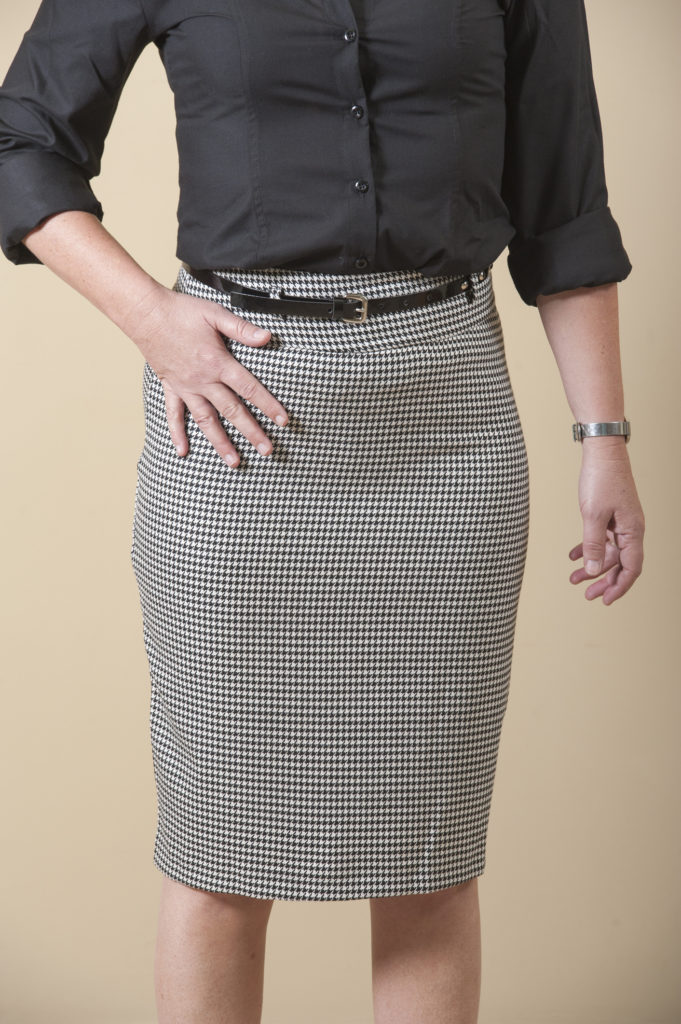 Some small, tight patterns, such as herringbone, thin stripes, and tiny polka dots may cause the audience to see a wavy, vibrating pattern ripple across the area with the pattern. On ties, it may not be as noticeable, nor is it as problematic in studios with state-of-the-art cameras. Still, they are best to avoid. Consider the timeless appeal of your interview. The patterns of today may no longer be popular tomorrow. Classic solid colors will always be classic and rarely go out of style.
Some small, tight patterns, such as herringbone, thin stripes, and tiny polka dots may cause the audience to see a wavy, vibrating pattern ripple across the area with the pattern. On ties, it may not be as noticeable, nor is it as problematic in studios with state-of-the-art cameras. Still, they are best to avoid. Consider the timeless appeal of your interview. The patterns of today may no longer be popular tomorrow. Classic solid colors will always be classic and rarely go out of style.
6. Eye on details
You don’t want to be excessive. While a bold, statement necklace can look good, simple and understated always works and looks great on TV. Your accessories must reflect who you are, enhance your look, and not distract from your message.
As Brown notes:
“Your jewelry should enhance your appearance without becoming the main attraction. A few genuine pieces, worn discreetly, are always the best in taste.”
Accessories can elevate a simple outfit or add pop if you have opted for a solid, more conservative color. They can be tricky, too, and there are some that should be avoided:
- Anything that dangles. Long necklaces and earrings may interfere with clip-on microphones or distract an audience. Also, scarves (on women) can be problematic, if they create rustling sounds on the mic or muffle your audio.
- Anything that jangles. Noisy bracelets and clinking beads will likely distract from your message. Isabelle said a producer may ask you to remove such problematic accessories.
- Anything that glints. If your jewelry is highly reflective, it may cause a glare. That goes for glasses, too. Ultimately, you have to balance your look with your comfort. If you choose to keep your glasses over contacts, one option is to invest in lenses with anti-reflective coating.
7. What not to do
These may fall in the category of “of course I know that,” but they bear repeating.
- Avoid the slouch. This goes for posture, but in terms of your attire, this one is for socks and hose. Make sure your socks are not too short or prone to slouch (or bunch up at the ankle). If you are sitting, you want them to stay up so that skin does not show. You also don’t want to keep pulling them up. (Also, check for runs in hoses before going on air.)
- Put the wrong feet forward. Your shoes should not be scuffed. The heels should be intact. If needed, they should be shined. And, check your soles for dirt, marks, and price tags.
- Show up wrinkled. Your outfit should be steamed or pressed. Otherwise, consider wrinkle-free material, come to the studio in casual clothes, with your TV outfit in a garment bag, or come toting a travel steamer. Isabelle says some larger and national programs will likely have a wardrobe department that can steam your outfit, but it doesn’t hurt to bring one of your own. A few other considerations:
Collar stays. These small fashion aids, also called collar tabs, are small pieces of plastic or metal that are inserted into pockets on the underside of your collar to keep it from drooping, sagging, or sticking out.
Take the proper seat. Brown says you can keep lapels in a smooth line running down from the shoulder when you sit, if you unbutton the bottom button when sitting down.
- Reveal too much. In general, nix slit skirts, which can be difficult to handle during a seated interview, as Brown notes. In women’s styles, avoid necklines that may be too low – scoop necks often work best – and any gaping arm openings so there are no wardrobe malfunctions. If you find yourself fidgeting or thinking you are revealing too much, you probably are.
8. All made up
To look great on TV, you’ve got to put your best face forward. The TV studio lights can create shadows, highlight imperfections, and bring attention to features you’d rather keep out of the spotlight.
Tracey Garcia
“Lighting is key,” says Tracey Garcia, a makeup artist who runs her own eponymous Washington, D.C.-based makeup and hairstyle service after having spent more than 14 years as a hair and makeup artist for the Fox News Channel D.C. bureau. Makeup, when done well, she says, can counter the less desirable effects of lighting that can affect all skin tones – dark, under-eye circles, washed-out features, and eyes that don’t pop.
“Every studio scenario is different,” says Isabelle, noting that the type of lighting, even the camera setting, can have an effect on your look – which is why it is important to know how to create a great look before you arrive at your interview. As you might ask about your wardrobe, ask for tips about makeup, too, in case you are doing your own makeup.
If you do not have access to the makeup artist, you can create a TV media interview-worthy look. Whether you are familiar with makeup or not, Garcia suggests going to a high-end cosmetics counter for help in finding the right shade for concealer, powder, and foundation for your skin tone. It may require mixing and matching several shades to get the right look. Also, avoid choosing any shade that is too light to cover those under-eye circles. Otherwise, viewers will notice two bright white arcs under your eyes.
Overall, Garcia says it’s OK to a bit heavier for television.
“Experiment with foundations, by seeing what it looks like in the store and then take a walk outside,” she says. “Make sure it is properly matched to the skin on your face.”
This is the order in which she works:
The brows. She refines and reshapes them, making sure both sides match – for men and women.
The eyes. “They have to pop,” she says. She works on the eyes first (for women) by applying concealer under the eyes, then sheer powder, and then a light base on the lid. She then incorporates additional lid colors, liner (she prefers liquid), and finishing with an under eye brightening setting powder. Be sure to lighten the corners – where your nose meets your eyes and shadows more readily form. If you are adept and comfortable doing it, you can apply some fake lashes (don’t do it for the first time for your interview) and mascara.
She says you can practice with the outer edge of your lashes if you don’t want a full set. It can be tricky to apply them, which require a special glue. “If you are doing this for the first time, I would put a little bit of lash glue on my hand and take a tip of a very thin brush and apply some on the strip and then the lid. I’ll fan the lid until it is more tacky,” Garcia says, adding that you don’t want a messy lash line so it’s best to practice before your prime-time appearance.
The rest of the face. Apply foundation, which for TV is usually a thicker cream (though liquid works, too). Then, take a darker powder (or bronzer) to create a contour in the area between the jaw and under the cheekbone. Blend it with a sponge or brush. Garcia says there are videos and books that can help you to nail this skill. She says don’t forget the neck, just blend everything – you don’t want a line of demarcation where makeup ends and your natural skin begins – and avoid getting makeup on your clothes.
The lips. She then moves on to a not-too-shiny gloss. If you are using lipliner, make sure to blend well. Pinks and corals can work. Author Lillian Brown suggests a shade that more or less matches the color of the inside of your mouth.
You can see Garcia’s progression in the following video:
Makeup artist Suzanne Eden, who owns a hair and makeup company, Clean Beauty Artists, which services the Washington, D.C. and New York City area, says healthy looking lips are very important when talking or smiling on camera. If she spots lips that are very dry, she uses lip scrub to remove the damaged and flaked skin. Then she applies lip moisturizer. She says you can do this at home before an event, too. In general, she says apply lip moisturizer routinely, night and day, to make them look and be healthier:
“For men, I like a more matte look and recommend moisturizing with the Lip Conditioner by Beautycounter at night. I then recommend using the Burt’s Bees Beeswax Lip Balm before being on camera for a less glossy look. For women, moisturizing your lips and then applying a flattering lipstick is key! For lipstick tones, I would stay away from really dark, really light, or bright colors. Neutral tones with berry hues are typically flattering on most people.”
Garcia says men have similar issues, including shadows under the eyes and washed-out coloring.
The face. She begins with foundation (cream better counters the 5 o’clock shadow) and then moves on to powder.
The eyes. She uses a light powder or shadow to get them to pop – both lightening from below and on the lid.
Here’s how Garcia makes this look:
If you only have a few minutes to get your makeup ready before you go on, focus on your eyes. Just don’t let your look come at the expense of your need for speed. Make sure to blend and take care not to smudge.
Also, remember to remove your jacket or cover your clothes with a towel or other protective shield to protect your outfit.
One last note about moisturizer: Garcia says remember to apply moisturizer to everything – hands, face, neck – anything that will be on camera. Apply it well before you have to go on, however, so that it can absorb into the skin and not look shiny or oily on the screen.
9. A Lock on Your Locks
Suzanne Eden
Clothes, makeup, and hair – it is a total package. So, don’t give those strands short shrift. Frizzy and fly-away hair can be distracting, Eden says. It can take away from an overall smooth look and potentially leave you less than confident before the cameras.
Hair should stay in place – it should not be easily disturbed – and not block parts of your face or your eyes from the camera (though you want to avoid hair that never moves held in place with copious amounts of hairspray). It should attractively frame your face. Invest in a quality anti-frizz product that tames flyaways and frizzy ends.
Eden notes:
“Similar to shiny skin, flyaway hair is really distracting and difficult to edit in post production. I found a really good trick to minimize fly-a-ways on your hair with a makeup brush (oddly enough). Using a Powder Brush (Eden likes the Powder Brush by Beautycounter), spray the brush with hairspray. After you do that, quickly brush over the flyaways on the top of your head. You can do this as many times as you need to. And let this be your flyaway brush. Definitely don’t use it on your face.”
For men, it’s largely the same advice. However, if you are bald or balding, powder your pate, with a color that matches your skin. That will reduce the shine from the lights.
In general, you don’t want to mess with your hair, such as fidgeting with a bang that falls over your eyes or a section of hair that hides your face.
A few other considerations:
- Avoid getting a haircut right before your interview. Like a new suit, you’ll want to try it out for a few days before it makes its debut on television.
- Beards and mustaches should be well-trimmed, so as to not hide your mouth.
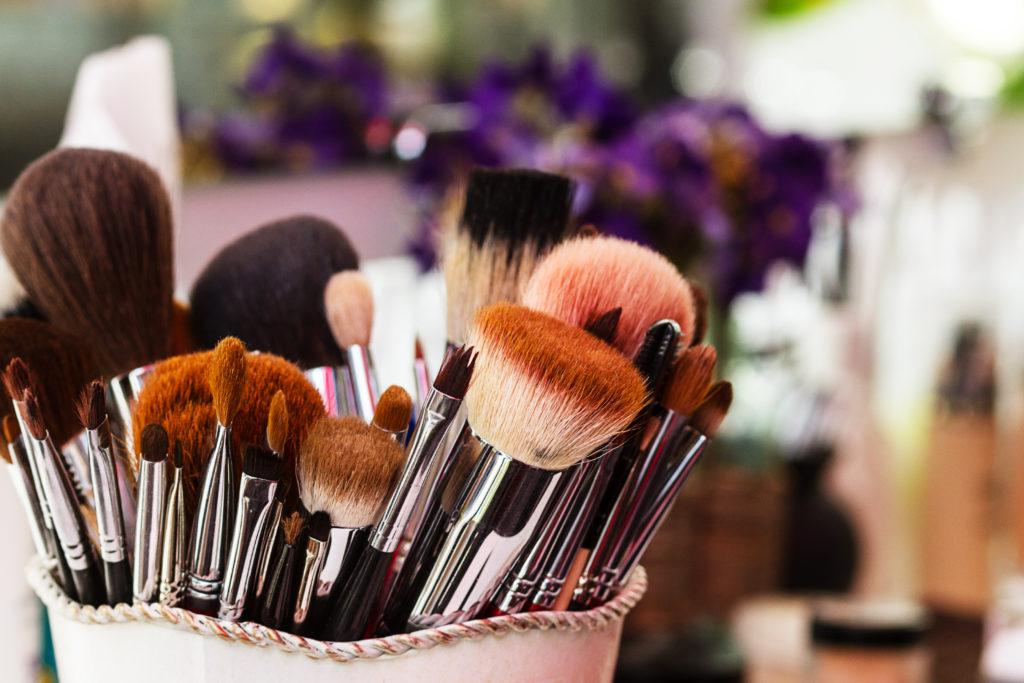
10. Be Prepared
The trick to an effective ensemble is knowing what works and having it ready to go in your closet. That way, even if the interview request is last minute, your outfit won’t look that way. The best outfit is the one you know flatters you and looks good. And, you have the road tests to prove it.
Isabelle suggests having a friend record you from all sides when you are in your outfit. That way, you can be comfortable if you are filmed from the waist up, standing, or sitting on a stool or chair. You’ll know what you look like at all angles.
Here are some other ways to be better prepared:
- Arrive early. If you come early, you should already have done your makeup, but the extra time might mean you get some time with a professional makeup artist who can enhance what you have done or start over.
- Shop ahead. If you are a spokesperson or subject matter expert, it’s worth the investment to have two well-fitted professional outfits ready to go in your closet. It takes away one of the pressures if you should get a call the night before an early morning interview.
- Head to toe. You may think you are only getting filmed from the waist up – at least that might be the plan – but make sure you have a complete outfit (no jacket with cargo shorts that you planned to keep hidden under the news desk).
- Know the hardware. Plan for a lavalier microphone, which must be clipped on a lapel, or edge of a neckline. The transmitter and battery pack also need a home. If you have on a suit jacket, the technicians might slip the pack into a pocket, or clip it on to the back of your waistband. Dresses can be trickier. The pack might go on the back of your neckline and under your hair or be clipped onto a bra strap underneath the dress.
“To this day, this is such a major challenge to me,” Isabelle says. “I will find the perfect outfit that looks so flattering and great on TV and I realize there is nowhere to clip the mic.”
Depending on your comfort and time spent on media interviews, she says there is a product that is used to mic actors for live theater. They are Velcro straps that wrap around your leg and the pack slips into a pocket, the wire can then run up through your outfit. Here’s one such product.
In Case of Emergency
You may not always have the time to prepare for a media interview. The call may come in and you are expected to quickly make it out to a location or a studio.
Here are some ways to be better prepared:
- Have an emergency suit … or whatever your go-to TV outfit is, hanging in your office. If most days at the office are more casual, you won’t have to scramble to figure out how to dress the part.
- Create emergency kits for hair and makeup. In your hair kit, have a brush or comb, some hairspray, anti-frizz products and powder (if it is not already in your make up kit) to keep the shine off a balding head. For makeup, Garcia says to have foundation, concealer, and powder. If you can’t put on your own lashes, pack a good black mascara and brow kit, as well as the eye shadows you need. Keep a good collection of brushes and a properly hued, quality lipstick.
- Fast fixes. Create a kit to counter life’s little emergencies. Make sure you have an extra pair of hose or socks, some safety pins, and bobby pins. A small sewing kit may save you if a button comes loose. Throw in some deodorant or deodorant wipes, too, along with some toothpaste and a toothbrush.
A healthy approach
It’s easier said than done, but get a good night’s sleep, drink water, and don’t go into your interview hungry. If you have a healthy glow, it will help to give you a vibrant glow for your interview.
One final check
Do one final dusting of your lapels and shoulders. Take a quick look in the mirror. And, if the lights and excitement caused you to perspire, take a tissue, or blotting paper, and blot it away.
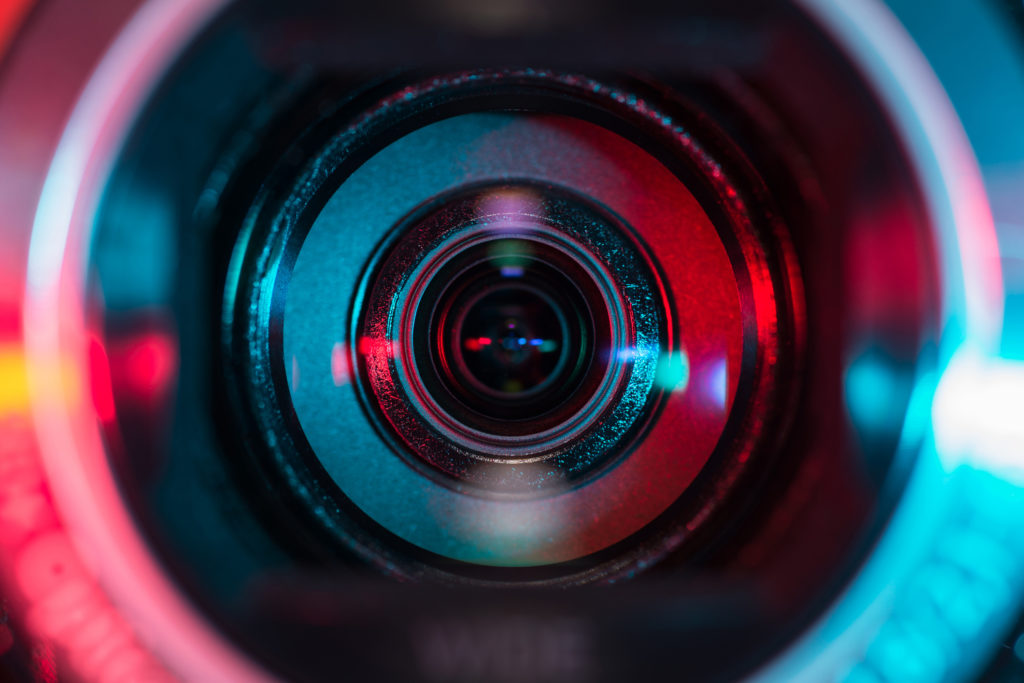
Ready for Your Closeup
In general, your wardrobe, makeup, and hairdo should be simple, understated, professional, contemporary, and what makes you feel and look good. How you appear will play a crucial role in getting your message out to your audience.
Studies have found that people develop an impression of you in mere moments. The exact timing varies, but, one study found it can be as little as a millisecond. You can’t control the timing, but you can control what it is that they see. When you look good, you feel good. That confidence is an important part of making a great first impression, as well as connecting with your audience.
 Stick to solid, bright colors. Stay in the center of the color spectrum for everything from suits to ties – blues, grays, and jewel tones, notes author Lillian Brown in Your Public Best: The Complete Guide to Making Successful Public Appearances in the Meeting Room, on the Platform, and on TV. Blues, including navy, cobalt, and French blue typically look great on TV, as do grays (dove and slate); purples (dark violet, lilac), and burgundy. A white shirt under a jacket will work, but a light blue or pastel is better. Solid jewel tone colors generally work well with any skin tone, such as sapphire blue and amethyst purple. (In the photo above, the two blues in the outfit of the woman in the foreground compliment one another. And, the texture of her dress adds visual interest.)
Stick to solid, bright colors. Stay in the center of the color spectrum for everything from suits to ties – blues, grays, and jewel tones, notes author Lillian Brown in Your Public Best: The Complete Guide to Making Successful Public Appearances in the Meeting Room, on the Platform, and on TV. Blues, including navy, cobalt, and French blue typically look great on TV, as do grays (dove and slate); purples (dark violet, lilac), and burgundy. A white shirt under a jacket will work, but a light blue or pastel is better. Solid jewel tone colors generally work well with any skin tone, such as sapphire blue and amethyst purple. (In the photo above, the two blues in the outfit of the woman in the foreground compliment one another. And, the texture of her dress adds visual interest.)